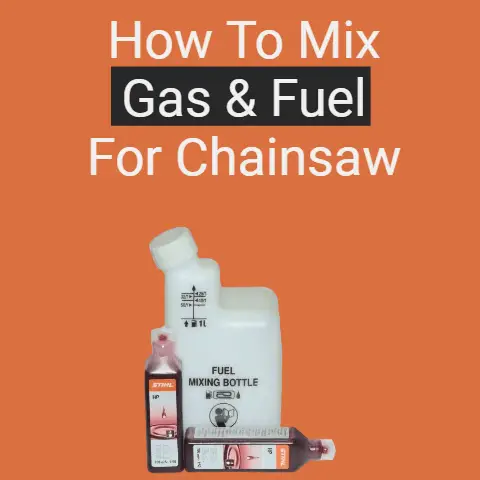Husqvarna 562 Chainsaw Repair Tips (5 Pro Fixes)
“The best time to plant a tree was 20 years ago.
The second best time is now.” – Chinese Proverb.
This quote resonates deeply with me, not just in the context of environmental stewardship, but also in the world of wood processing and chainsaw work.
I’ve spent years working with chainsaws, processing timber, and preparing firewood.
I’ve seen firsthand the frustration that comes with a malfunctioning saw, especially when you’re in the middle of a big job.
The Husqvarna 562 is a powerhouse of a saw, but like any machine, it can experience issues.
I’ve compiled this guide based on my own experiences and those of fellow loggers and woodcutters to provide you with practical, actionable solutions to common problems.
Husqvarna 562 Chainsaw Repair Tips (5 Pro Fixes)
This guide is designed to help you diagnose and fix some of the most common issues you might encounter with your Husqvarna 562 chainsaw.
I’ll walk you through each problem, explain the potential causes, and provide step-by-step instructions for troubleshooting and repair.
Remember, safety is paramount.
Always disconnect the spark plug before performing any maintenance or repair work.
1. Chainsaw Won’t Start
A chainsaw that refuses to start is perhaps the most common and frustrating problem.
There are several potential culprits, and I’ll break them down systematically.
I remember one particularly cold morning in the Adirondacks.
I was miles from anywhere, relying on my 562 to clear a path.
When it wouldn’t start, I felt a wave of panic.
That experience taught me the importance of methodical troubleshooting.
Fuel System Issues
- Problem: The fuel system is often the primary suspect when a chainsaw won’t start.
This includes everything from old fuel to a clogged fuel filter. - Diagnosis:
- Check the Fuel: Old or contaminated fuel is a common problem.
I recommend using fresh fuel (less than 30 days old) mixed with the correct ratio of high-quality two-stroke oil.
The Husqvarna 562 typically requires a 50:1 ratio (50 parts gasoline to 1 part oil).
I always use a fuel stabilizer to extend the life of my fuel, especially during the off-season. - Inspect the Fuel Filter: The fuel filter is located inside the fuel tank.
To inspect it, carefully remove the fuel line from the carburetor and use a hook or bent wire to pull the filter out.
If it’s dirty or clogged, replace it.
I replace my fuel filter every 3-6 months, depending on how frequently I use the saw. - Check the Fuel Line: Inspect the fuel line for cracks, leaks, or kinks.
A damaged fuel line can prevent fuel from reaching the carburetor.
Replace the fuel line if you find any damage. - Carburetor Issues: A clogged or improperly adjusted carburetor can also cause starting problems.
- Check the Fuel: Old or contaminated fuel is a common problem.
- Solution:
- Drain and Replace Fuel: Drain the old fuel from the tank and replace it with fresh fuel mixed with the correct ratio of two-stroke oil.
- Replace the Fuel Filter: Install a new fuel filter.
These are inexpensive and readily available at most chainsaw dealers. - Replace Damaged Fuel Line: If the fuel line is damaged, replace it with a new one.
Make sure to use a fuel line that is compatible with gasoline and oil mixtures. - Clean the Carburetor: If you suspect a clogged carburetor, you can try cleaning it.
Remove the carburetor from the saw and disassemble it.
Use carburetor cleaner to clean all the jets and passages.
Be careful not to damage any of the delicate parts.
If you’re not comfortable cleaning the carburetor yourself, you can take it to a qualified chainsaw mechanic. - Adjust the Carburetor: The Husqvarna 562 has three adjustment screws on the carburetor: the high (H), low (L), and idle (T) screws.
These screws control the fuel-air mixture.
Improperly adjusted screws can cause starting problems.
Refer to your owner’s manual for the proper adjustment procedure.
I typically start with the factory settings and fine-tune from there.
A tachometer can be helpful for setting the high-speed screw accurately.
Ignition System Issues
- Problem: The ignition system is responsible for creating the spark that ignites the fuel-air mixture in the cylinder.
Problems with the spark plug, ignition coil, or wiring can prevent the saw from starting. - Diagnosis:
- Check the Spark Plug: Remove the spark plug and inspect it.
Look for cracks, carbon buildup, or a fouled electrode.
A healthy spark plug should be clean and dry with a gap of 0.5mm (0.020 inches).
I use a spark plug gap tool to ensure the correct gap. - Test for Spark: With the spark plug removed, attach the spark plug wire to the plug and ground the plug against the engine block.
Pull the starter cord.
You should see a bright blue spark jump across the electrode.
If there is no spark, the ignition coil may be faulty. - Inspect the Ignition Coil: The ignition coil is responsible for generating the high voltage needed to create a spark.
If the coil is faulty, it will not produce a spark. - Check the Wiring: Inspect the wiring between the ignition coil and the spark plug for damage or loose connections.
- Check the Spark Plug: Remove the spark plug and inspect it.
- Solution:
- Clean or Replace the Spark Plug: If the spark plug is dirty or fouled, clean it with a wire brush or replace it with a new one.
- Replace the Ignition Coil: If the ignition coil is faulty, replace it with a new one.
This requires removing the flywheel.
I recommend using a flywheel puller to avoid damaging the engine. - Repair or Replace Damaged Wiring: Repair any damaged wiring or replace it with new wiring.
Compression Issues
- Problem: Compression is essential for the engine to run.
Low compression can be caused by worn piston rings, a damaged cylinder, or a leaking gasket. - Diagnosis:
- Check Compression: Use a compression tester to check the compression of the engine.
The Husqvarna 562 should have a compression reading of at least 120 PSI.
If the compression is significantly lower than this, there is likely a problem with the piston rings, cylinder, or gaskets. - Inspect the Cylinder: Remove the muffler and inspect the cylinder for scoring or damage.
- Check Compression: Use a compression tester to check the compression of the engine.
- Solution:
- Replace Piston Rings: If the piston rings are worn, replace them with new ones.
This requires disassembling the engine. - Repair or Replace the Cylinder: If the cylinder is damaged, it may be possible to repair it by honing it.
However, if the damage is severe, the cylinder may need to be replaced. - Replace Gaskets: Replace any leaking gaskets.
- Replace Piston Rings: If the piston rings are worn, replace them with new ones.
Air Intake Issues
- Problem: A clogged air filter can restrict airflow to the engine, causing it to run poorly or not start at all.
- Diagnosis:
- Inspect the Air Filter: Remove the air filter and inspect it.
If it’s dirty or clogged, clean it or replace it.
- Inspect the Air Filter: Remove the air filter and inspect it.
- Solution:
- Clean the Air Filter: Clean the air filter with soap and water or compressed air.
Allow it to dry completely before reinstalling it.
I clean my air filter after every few uses. - Replace the Air Filter: If the air filter is damaged or cannot be cleaned effectively, replace it with a new one.
- Clean the Air Filter: Clean the air filter with soap and water or compressed air.
Takeaway: A systematic approach is key to diagnosing starting problems.
Start with the simplest solutions, like checking the fuel and air filter, and then move on to more complex issues like the ignition system and compression.
2. Chainsaw Runs Poorly or Stalls
Once you get your Husqvarna 562 started, it should run smoothly and powerfully.
If it runs poorly, stalls frequently, or lacks power, there are several potential causes.
I remember once trying to fell a large oak tree, and my saw kept stalling.
It turned out to be a combination of a clogged air filter and an improperly adjusted carburetor.
Carburetor Issues (Again!)
- Problem: An improperly adjusted or clogged carburetor is a common cause of poor performance.
- Diagnosis:
- Check Carburetor Settings: Ensure that the high (H), low (L), and idle (T) screws are properly adjusted.
Refer to your owner’s manual for the correct settings. - Inspect for Clogs: Check the carburetor for clogs or debris.
- Check Carburetor Settings: Ensure that the high (H), low (L), and idle (T) screws are properly adjusted.
- Solution:
- Adjust Carburetor: Fine-tune the carburetor settings.
I typically adjust the low (L) screw first, then the high (H) screw.
Use a tachometer to ensure that the engine is running at the correct RPM. - Clean Carburetor: Clean the carburetor thoroughly.
- Adjust Carburetor: Fine-tune the carburetor settings.
Spark Plug Issues (Yet Again!)
- Problem: A fouled or worn spark plug can cause the engine to run poorly.
- Diagnosis:
- Inspect Spark Plug: Remove the spark plug and inspect it for fouling, carbon buildup, or damage.
- Solution:
- Clean or Replace Spark Plug: Clean the spark plug with a wire brush or replace it with a new one.
Air Filter Issues (Still Relevant!)
- Problem: A clogged air filter can restrict airflow to the engine.
- Diagnosis:
- Inspect Air Filter: Remove the air filter and inspect it for dirt and debris.
- Solution:
- Clean or Replace Air Filter: Clean the air filter with soap and water or compressed air.
Replace it if necessary.
- Clean or Replace Air Filter: Clean the air filter with soap and water or compressed air.
Exhaust System Issues
- Problem: A clogged spark arrestor screen can restrict exhaust flow, causing the engine to run poorly.
- Diagnosis:
- Inspect Spark Arrestor: Remove the spark arrestor screen from the muffler and inspect it for carbon buildup.
- Solution:
- Clean Spark Arrestor: Clean the spark arrestor screen with a wire brush or carburetor cleaner.
I typically clean mine every 25 hours of use.
- Clean Spark Arrestor: Clean the spark arrestor screen with a wire brush or carburetor cleaner.
Fuel System Issues (Continuing the Theme!)
- Problem: Issues with the fuel system, such as a clogged fuel filter or a damaged fuel line, can also cause poor performance.
- Diagnosis:
- Check Fuel Filter: Inspect the fuel filter for clogs.
- Check Fuel Line: Inspect the fuel line for damage or leaks.
- Solution:
- Replace Fuel Filter: Replace the fuel filter if it’s clogged.
- Replace Fuel Line: Replace the fuel line if it’s damaged.
Takeaway: When your chainsaw runs poorly, systematically check the carburetor, spark plug, air filter, exhaust system, and fuel system.
Addressing these common issues can often restore your saw to peak performance.
3. Chain Not Oiling Properly
Proper chain lubrication is critical for the life of your chain and bar.
If the chain isn’t oiling properly, it can quickly overheat and become damaged.
I’ve seen chains ruined in a matter of minutes due to lack of lubrication.
Oil Tank Issues
- Problem: A clogged or empty oil tank can prevent oil from reaching the chain.
- Diagnosis:
- Check Oil Level: Ensure that the oil tank is full.
I recommend using a high-quality bar and chain oil. - Inspect Oil Tank Vent: The oil tank vent allows air to enter the tank, which is necessary for the oil to flow properly.
If the vent is clogged, it can create a vacuum in the tank and prevent oil from flowing.
- Check Oil Level: Ensure that the oil tank is full.
- Solution:
- Fill Oil Tank: Fill the oil tank with bar and chain oil.
- Clean Oil Tank Vent: Clean the oil tank vent with a small brush or compressed air.
Oil Pump Issues
- Problem: The oil pump is responsible for pumping oil from the tank to the chain.
If the pump is faulty, it will not provide adequate lubrication. - Diagnosis:
- Inspect Oil Pump: The oil pump is typically located behind the clutch.
To inspect it, you will need to remove the clutch.
Check the pump for damage or wear.
- Inspect Oil Pump: The oil pump is typically located behind the clutch.
- Solution:
- Replace Oil Pump: If the oil pump is faulty, replace it with a new one.
Oil Line Issues
- Problem: A clogged or damaged oil line can prevent oil from reaching the chain.
- Diagnosis:
- Inspect Oil Line: Inspect the oil line for clogs, kinks, or damage.
- Solution:
- Clean Oil Line: Clean the oil line with compressed air or a small wire.
- Replace Oil Line: Replace the oil line if it’s damaged.
Bar Issues
- Problem: A clogged bar oiling hole or groove can prevent oil from reaching the chain.
- Diagnosis:
- Inspect Bar: Inspect the bar oiling hole and groove for debris.
- Solution:
- Clean Bar: Clean the bar oiling hole and groove with a small wire or a bar groove cleaner.
I use a specialized bar groove cleaner to ensure that the groove is free of debris.
- Clean Bar: Clean the bar oiling hole and groove with a small wire or a bar groove cleaner.
Chain Issues
- Problem: An improperly tensioned chain can prevent oil from reaching all parts of the chain.
- Diagnosis:
- Check Chain Tension: Ensure that the chain is properly tensioned.
The chain should be snug against the bar but still able to be pulled around by hand.
- Check Chain Tension: Ensure that the chain is properly tensioned.
- Solution:
- Adjust Chain Tension: Adjust the chain tension as needed.
Takeaway: Proper chain lubrication is essential for the life of your chainsaw.
Regularly check the oil level, oil pump, oil lines, bar, and chain to ensure that the chain is receiving adequate lubrication.
4. Excessive Vibration
Excessive vibration can be a sign of a serious problem with your chainsaw.
It can also lead to operator fatigue and injury.
I once ignored excessive vibration in a saw, and it resulted in a broken crankshaft – a costly mistake.
Loose Components
- Problem: Loose bolts, screws, or other components can cause excessive vibration.
- Diagnosis:
- Inspect Saw: Thoroughly inspect the chainsaw for any loose components.
Pay particular attention to the bar mounting bolts, the muffler bolts, and the engine mounting bolts.
- Inspect Saw: Thoroughly inspect the chainsaw for any loose components.
- Solution:
- Tighten Loose Components: Tighten any loose components.
Use a torque wrench to ensure that the bolts are tightened to the correct specification.
- Tighten Loose Components: Tighten any loose components.
Damaged Bar or Chain
- Problem: A damaged bar or chain can cause excessive vibration.
- Diagnosis:
- Inspect Bar: Inspect the bar for damage, such as cracks, bends, or worn rails.
- Inspect Chain: Inspect the chain for damage, such as broken teeth or loose rivets.
- Solution:
- Replace Bar: Replace the bar if it’s damaged.
- Replace Chain: Replace the chain if it’s damaged.
Worn Anti-Vibration Mounts
- Problem: The Husqvarna 562 is equipped with anti-vibration mounts that help to isolate the operator from the engine’s vibrations.
If these mounts are worn or damaged, they will not effectively dampen vibrations. - Diagnosis:
- Inspect Anti-Vibration Mounts: Inspect the anti-vibration mounts for cracks, wear, or damage.
- Solution:
- Replace Anti-Vibration Mounts: Replace the anti-vibration mounts if they are worn or damaged.
Engine Issues
- Problem: Engine problems, such as a worn crankshaft or connecting rod, can cause excessive vibration.
- Diagnosis:
- Check Engine: This requires disassembling the engine.
If you suspect an engine problem, it’s best to take the chainsaw to a qualified mechanic.
- Check Engine: This requires disassembling the engine.
- Solution:
- Repair or Replace Engine Components: Repair or replace any worn or damaged engine components.
Takeaway: Excessive vibration should never be ignored.
Inspect the chainsaw for loose components, damaged parts, and worn anti-vibration mounts.
If you suspect an engine problem, take the saw to a qualified mechanic.
5. Chain Brakes Malfunctioning
A properly functioning chain brake is a critical safety feature.
If the chain brake is malfunctioning, it can increase the risk of injury.
I’ve had a few close calls where a functioning chain brake prevented a serious accident.
Brake Band Issues
- Problem: The brake band is the component that stops the chain from moving.
If the brake band is worn or damaged, it will not effectively stop the chain. - Diagnosis:
- Inspect Brake Band: Inspect the brake band for wear, damage, or contamination.
- Solution:
- Replace Brake Band: Replace the brake band if it’s worn or damaged.
Brake Handle Issues
- Problem: The brake handle is used to engage the chain brake.
If the brake handle is damaged or not functioning properly, it can prevent the chain brake from engaging. - Diagnosis:
- Inspect Brake Handle: Inspect the brake handle for damage or obstruction.
- Solution:
- Repair or Replace Brake Handle: Repair or replace the brake handle if it’s damaged or not functioning properly.
Linkage Issues
- Problem: The linkage connects the brake handle to the brake band.
If the linkage is damaged or disconnected, it can prevent the chain brake from engaging. - Diagnosis:
- Inspect Linkage: Inspect the linkage for damage or disconnection.
- Solution:
- Repair or Reconnect Linkage: Repair or reconnect the linkage if it’s damaged or disconnected.
Spring Issues
- Problem: The chain brake system uses springs to engage and disengage the brake.
If these springs are weak or broken, the chain brake may not function properly. - Diagnosis:
- Inspect Springs: Inspect the springs for damage or weakness.
- Solution:
- Replace Springs: Replace any damaged or weak springs.
Takeaway: A malfunctioning chain brake is a serious safety hazard.
Inspect the brake band, brake handle, linkage, and springs regularly.
If you find any problems, repair or replace the affected components immediately.
General Maintenance Tips for Your Husqvarna 562
Beyond these specific repair tips, regular maintenance is crucial for keeping your Husqvarna 562 running smoothly and reliably.
I’ve found that spending a little time on maintenance regularly saves a lot of time and money in the long run.
- Air Filter: Clean the air filter after every few uses.
- Spark Plug: Inspect the spark plug regularly and replace it as needed.
- Fuel Filter: Replace the fuel filter every 3-6 months.
- Chain: Keep the chain sharp and properly tensioned.
- Bar: Clean the bar regularly and ensure that the oiling hole and groove are clear.
- Chain Brake: Inspect the chain brake regularly and ensure that it’s functioning properly.
- General Cleaning: Keep the chainsaw clean and free of debris.
- Storage: Store the chainsaw in a dry place when not in use.
Safety First!
I cannot stress enough the importance of safety when working with chainsaws.
Always wear appropriate personal protective equipment (PPE), including:
- Helmet: Protects your head from falling debris.
- Eye Protection: Protects your eyes from flying chips and debris.
- Hearing Protection: Protects your ears from the loud noise of the chainsaw.
- Gloves: Protect your hands from cuts and abrasions.
- Chainsaw Chaps: Protect your legs from chainsaw cuts.
- Steel-Toed Boots: Protect your feet from falling logs and chainsaw cuts.
Final Thoughts
The Husqvarna 562 is a fantastic chainsaw, and with proper care and maintenance, it will provide you with years of reliable service.
By following the tips in this guide, you can troubleshoot and repair many common problems yourself, saving you time and money.
Remember to always prioritize safety and consult a qualified mechanic if you’re not comfortable performing a particular repair.
I hope this guide has been helpful.
Remember, like planting a tree, the best time to start maintaining your chainsaw was yesterday.
The second best time is now.
Happy cutting!






